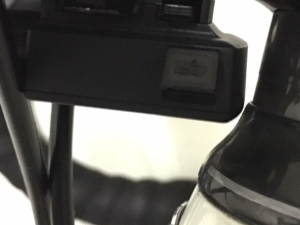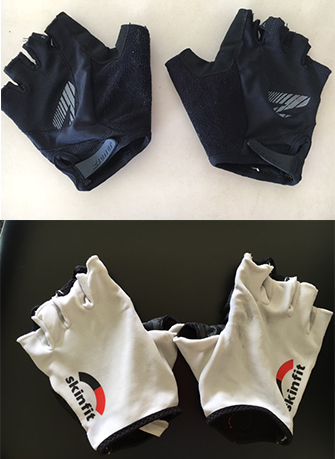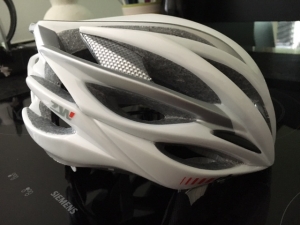Bequem, präzise und leicht ist sie. Wer an seinem Rennvelo mal eine elektronische Schaltung benutzt hat, möchte nicht mehr zurück auf die mechanische Variante. Einzige Achillessehne: dass alle rund 2000 Kilometer die Batterie langsam zur Neige geht.
Klein und fein sitzt mein Akku für die elektronische Schaltung unter dem Lenkervorbau. Direkt nach der Velorunde also «chnüble» ich den Mini-Deckel auf. Was daraufhin folgt, zehrt jedoch an meinen Nerven. Ich kriege den 4 mm breiten Stecker einfach nicht in die winzig kleine Buchse. So angenehm klein der Akku unter dem Vorbau versteckt ist, die Winzigkeit hat ihren Preis. Ohne Lesebrille geht gar nichts. Und sind wir ehrlich, wer nimmt schon seine Lesebrille mit auf eine Velotour?
Also taste ich mit meinen Fingerspitzen den Stecker ab und entdecke, dass er nur auf einer Seite eine millimetertiefe Furche hat. Es gibt also eine richtige und eine falsche Art des Einsteckens. Ich drehe und wende den Stecker immer wieder – mit mehr oder weniger Gefühl versuche ich ihn in die Buchse zu fügen.
Erschwert wird die Übung dadurch, dass weder Ton noch Impuls mir mitteilen, ob der Stecker schliesslich tatsächlich Kontakt geschaffen hat.
Nachdem der Stecker also nicht mehr einfach rausfällt, muss ich davon ausgehen, dass jetzt das Laden im Gang ist und kann nur hoffen, dass nach einer Nacht am Strom wieder genügend Saft da ist. Am nächsten Morgen teste ich die Akkuladung aus. Es leuchtet grün. Alles im grünen Bereich? Ich hoffe es mal. Falls ich auf einer meiner nächsten Velorunden die Tour nur einem Gang beenden sollte, melde ich mich an dieser Stelle gerne wieder.
Battery charging for the electronic gearshift – an utter nightmare for people with age related debility of sight
Comfortable, precise and lightweight. Whoever decides for the electronic gearshifting on his racing bike, will most probably never go back to mechanical. The only disadvantage is, that – after 2000 km or so – the battery runs out. But every time I dread the recharging process!
Tiny and unobtrusive clings the charging unit to the under side of the stem. With my finger nail I scratch open the tiny socket. What comes next, is really extremely annoying. I can’t seem to get the 4 mm plug into the socket. The tininess has its prize. But without my reading glasses I don’t stand a chance to see what hinders the connection.
So I start to fumble and feel around for an explanation. I notice that the two sides of the plug are somehow different. There is a tiny indentation on only one side. I turn the plug multiple times trying to fit it into the socket without seeing what I’m doing.
Moreover, there is no acoustic nor visual signal telling me that the plug has connected. Quite some room for improvement in my opinion.
Finally, when the plug doesn’t drop out anymore, I gather that the charging started, but can’t be sure. The next morning, when testing the the battery, I see a green light. Being optimistic that everything is fine I head outdoors. If I get stranded during one of the next rides, however, I’ll let you know.
















